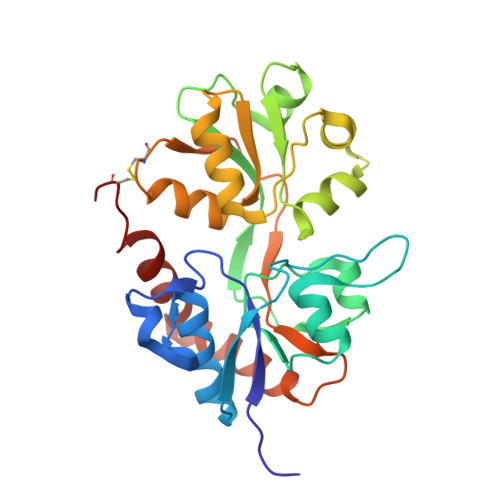Enhancing Action of Positive Allosteric Modulators through the Design of Dimeric Compounds.
Drapier, T., Geubelle, P., Bouckaert, C., Nielsen, L., Laulumaa, S., Goffin, E., Dilly, S., Francotte, P., Hanson, J., Pochet, L., Kastrup, J.S., Pirotte, B.(2018) J Med Chem 61: 5279-5291
- PubMed: 29775064
- DOI: https://doi.org/10.1021/acs.jmedchem.8b00250
- Primary Citation of Related Structures:
6FAZ - PubMed Abstract:
The present study describes the identification of highly potent dimeric 1,2,4-benzothiadiazine 1,1-dioxide (BTD)-type positive allosteric modulators of the AMPA receptors (AMPApams) obtained by linking two monomeric BTD scaffolds through their respective 6-positions. Using previous X-ray data from monomeric BTDs cocrystallized with the GluA2 ligand-binding domain (LBD), a molecular modeling approach was performed to predict the preferred dimeric combinations. Two 6,6-ethylene-linked dimeric BTD compounds (16 and 22) were prepared and evaluated as AMPApams on HEK293 cells expressing GluA2 o ( Q) (calcium flux experiment). These compounds were found to be about 10,000 times more potent than their respective monomers, the most active dimeric compound being the bis-4-cyclopropyl-substituted compound 22 [6,6'-(ethane-1,2-diyl)bis(4-cyclopropyl-3,4-dihydro-2 H-1,2,4-benzothiadiazine 1,1-dioxide], with an EC 50 value of 1.4 nM. As a proof of concept, the bis-4-methyl-substituted dimeric compound 16 (EC 50 = 13 nM) was successfully cocrystallized with the GluA2 o -LBD and was found to occupy the two BTD binding sites at the LBD dimer interface.
Organizational Affiliation:
Laboratory of Medicinal Chemistry, Center for Interdisciplinary Research on Medicines (CIRM) , ULiège , Quartier Hôpital, Avenue Hippocrate, 15, B36 , B-4000 Liège , Belgium.






















